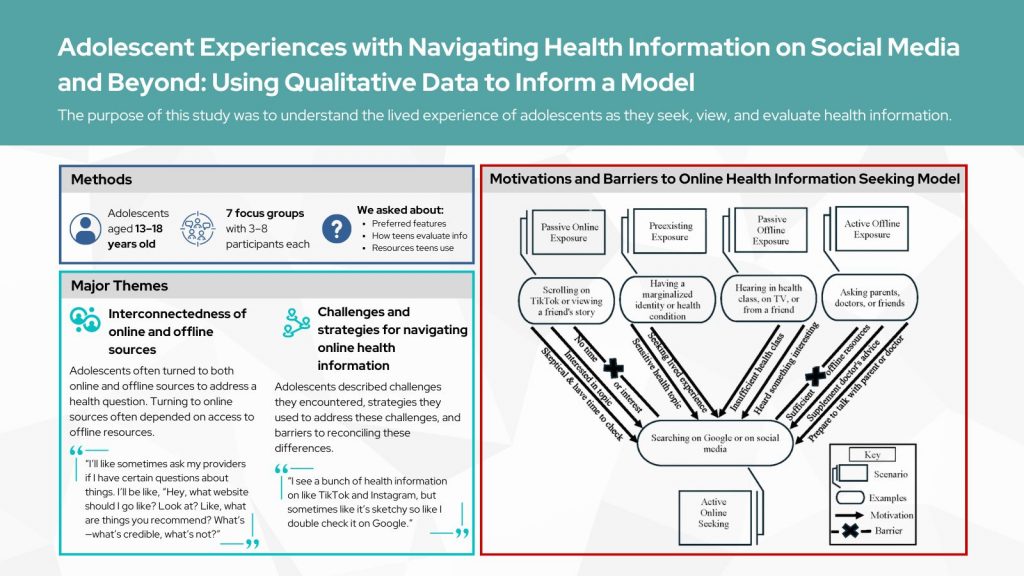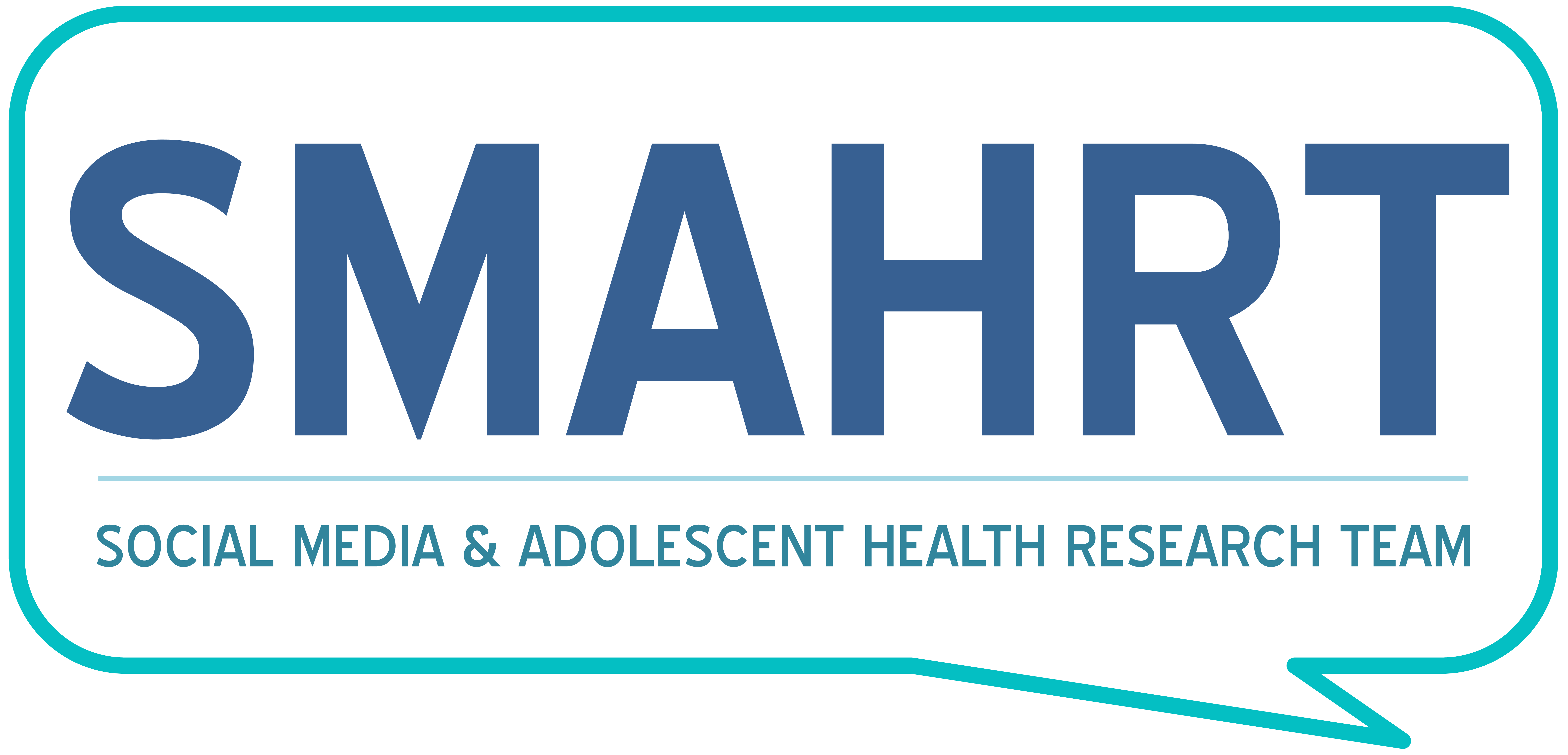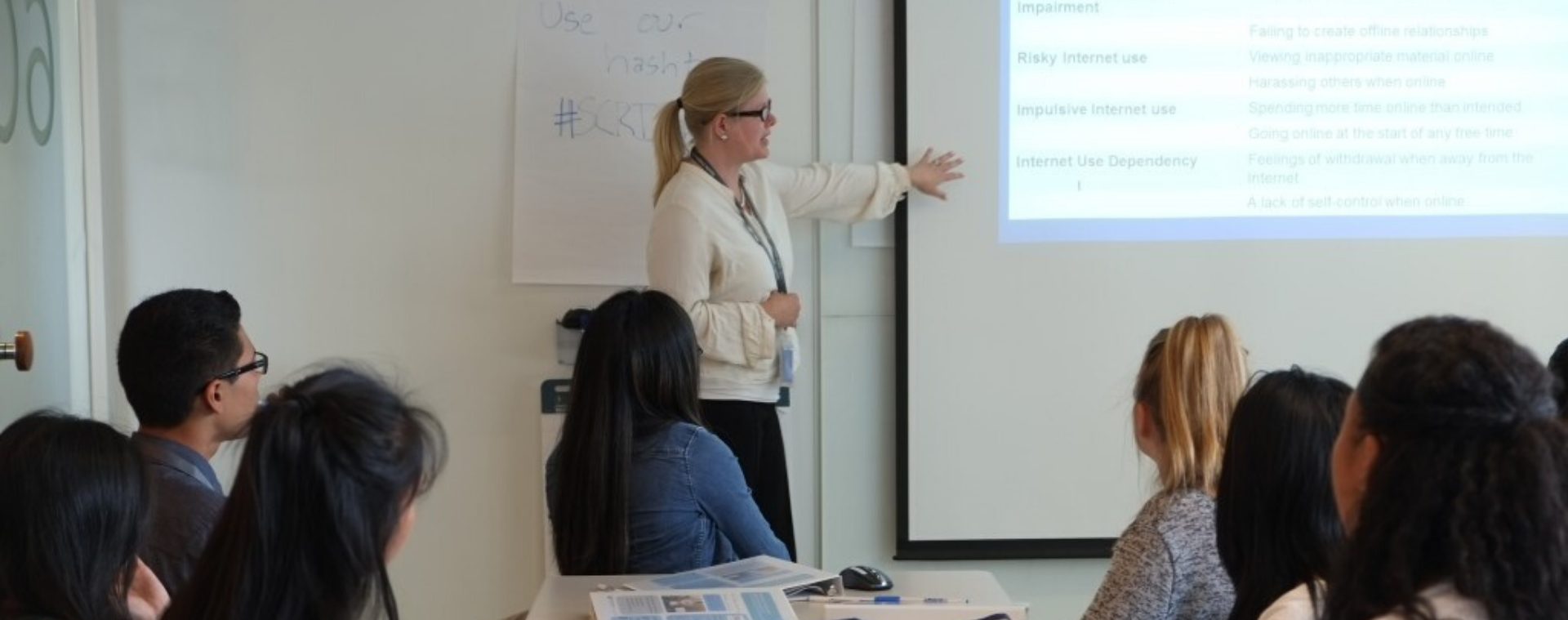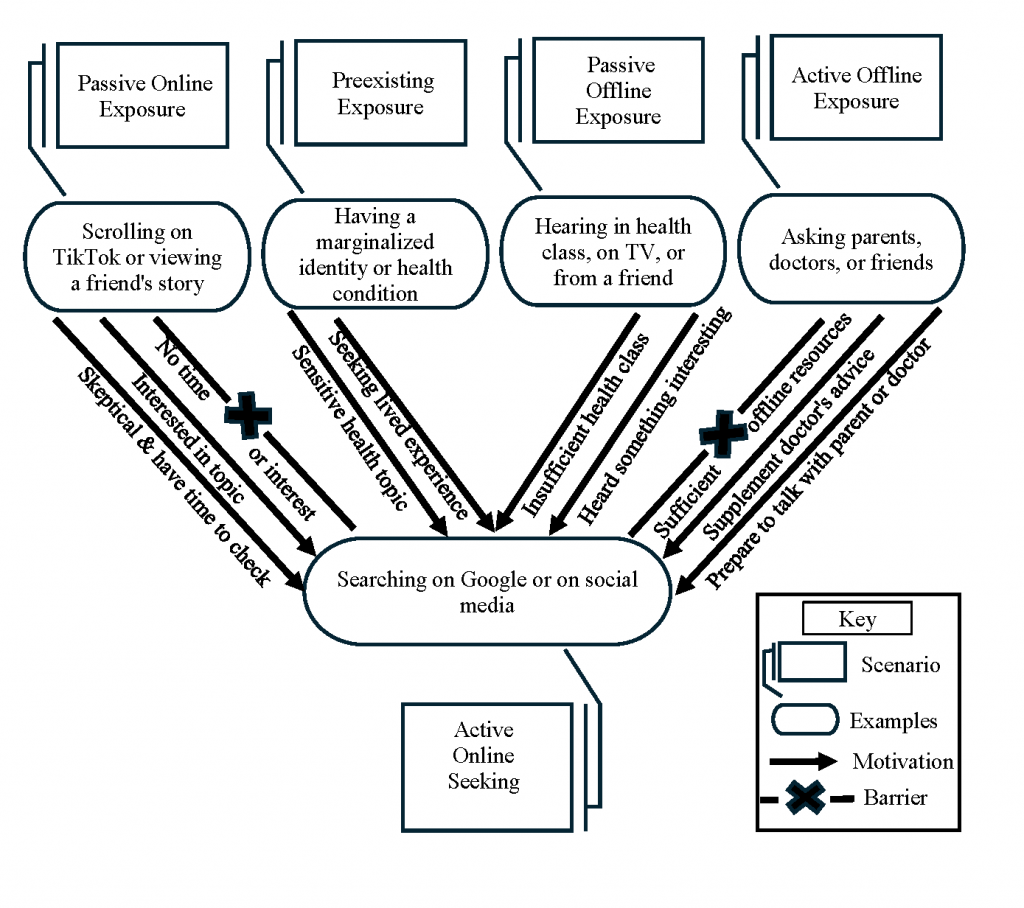Avery Salerno, Drs. Angie Calvin, Marina Jenkins, and Megan Moreno recently published an article in the Journal of Adolescent Health titled “Adolescent Experiences with Navigating Health Information on Social Media and Beyond: Using Qualitative Data to Inform a Model.”
The study included seven focus groups of adolescents ages 13 to 18 to ask them about their experiences with health information online and offline. Participants were asked about features they liked online, how they evaluated the health information, and the resources they used to gather information.
Why use focus groups to collect qualitative data?
This study used focus groups to understand the shared experiences of adolescents, as well as provide an opportunity for them to share new perspectives that came to mind during each session. Qualitative data, which includes focus groups, are an important methodology in research. It allows researchers to better understand a research question, and explore motivations and experiences of participants that quantitative methods, like surveys, might miss.
What was found? Tell me more about the model.
A total of 36 adolescents participated in the seven focus groups. The focus groups helped to create a conceptual model and two supporting themes to represent how adolescents navigate health information.
A conceptual model is used in research to represent findings from a system, theory, or phenomenon. In this study, adolescents described how they determine whether or not to seek health information online. The conceptual model was created based on these discussions. Findings depicted in the model show that whether or not adolescents seek online health information depends on the way they are first exposed to health information. Different types of exposures may or may not lead to seeking additional online health information, depending on the motivations or barriers adolescents experience.
Two supporting themes also emerged from the adolescent discussions.
The first theme reflected the interconnectedness of online and offline health information sources. For example, if adolescents encountered a serious health event, they turned to trusted adults and medical professionals, and used online sources to supplement those trusted adults. However, if they were unsatisfied with the information they received from these trusted adults, they often turned to online sources. If adolescents were seeking sensitive health information, like sexual and reproductive health, they turned to online sources first. Friendships and peer relationships also played a role in seeking health information online.
The second theme showed challenges that adolescents faced when seeking health information online and strategies to address those challenges. The primary challenge discussed was skepticism about the accuracy of online health information, which included topics such as diet and exercise content, as well as mental health information. In addition to accuracy, adolescents discussed barriers around determining credibility. Adolescents described various strategies to address these challenges, including looking for medical credentials on social media profiles and cross-checking information across multiple sources.

What do these results mean?
Adolescents continue to turn to online health information, whether that is to supplement offline resources (like trusted adults), learn more about sensitive health questions, and to seek online communities. However, they continue to face challenges around determining accuracy and credibility of online sources.


